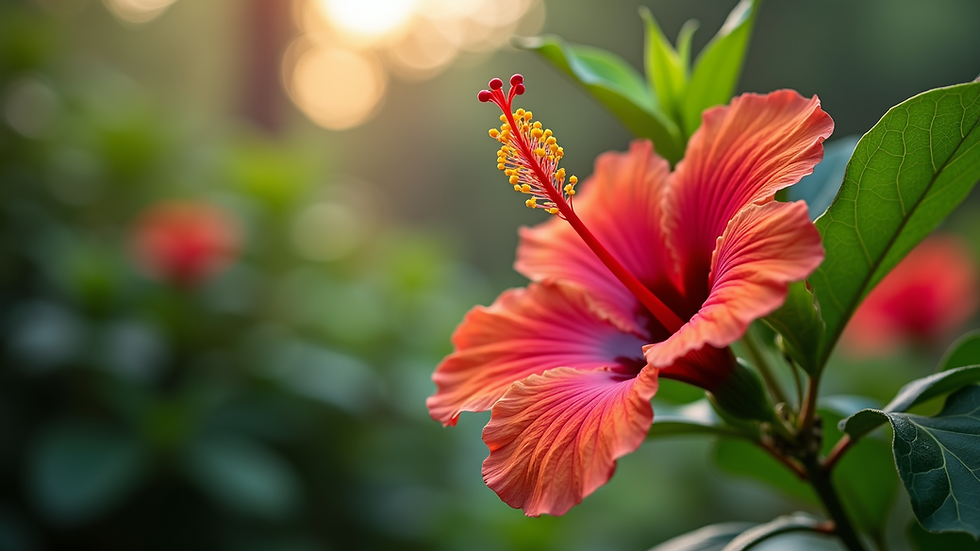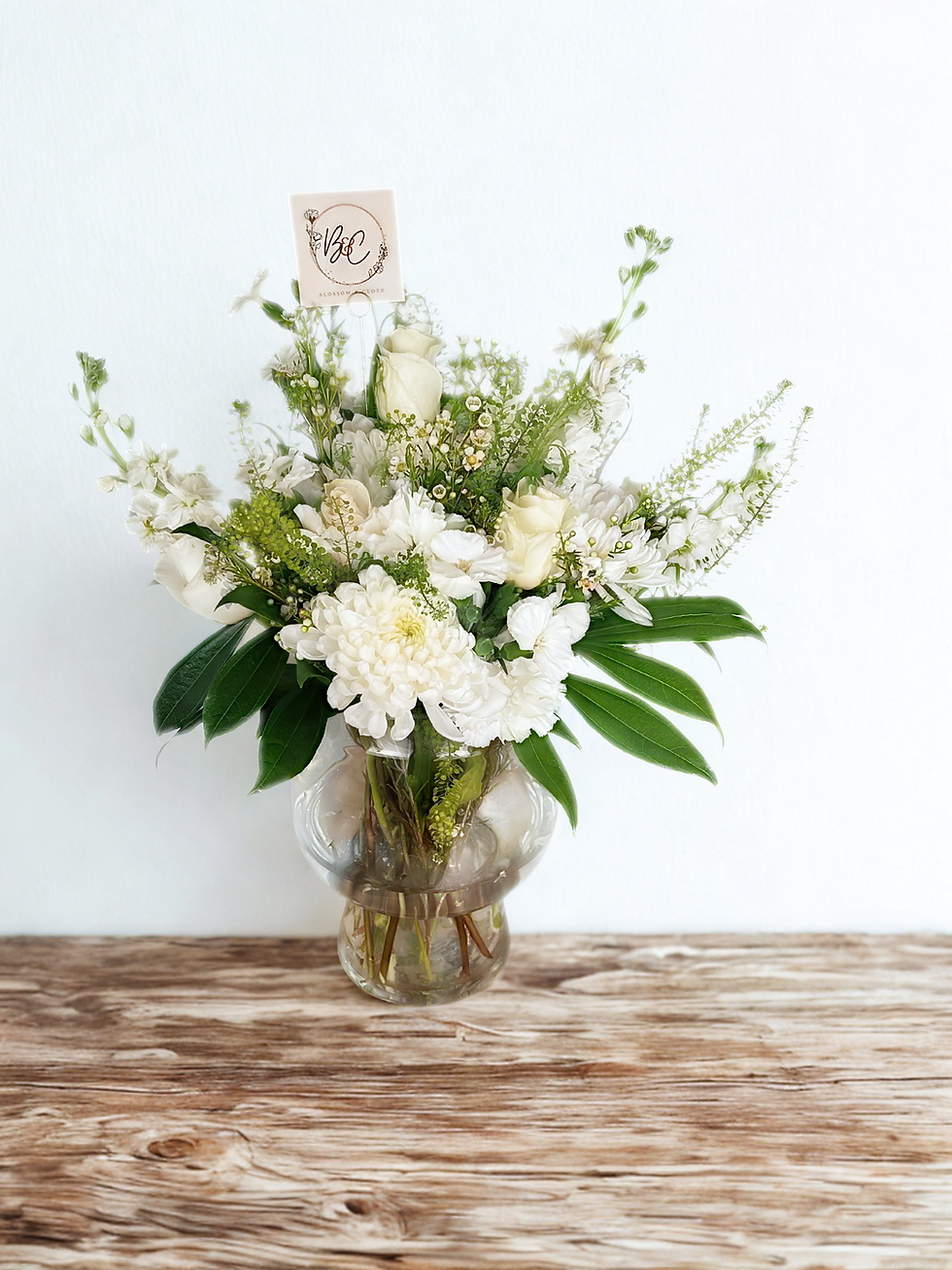How to Care for Flowers in Florida’s Humid Climate to Create Stunning Floral Arrangements
- Blossom & Cloth

- Jul 16
- 4 min read
Updated: Jul 18
Florida’s humid climate presents both challenges and opportunities for flower lovers, brides, and event planners. With the right know-how, you can ensure that your floral arrangements not only thrive but also dazzle for any occasion. Understanding how to care for flowers in this vibrant environment is essential.

Understanding Florida's Humid Climate and How to Care for Flowers
Florida is famous for its tropical climate, marked by warm temperatures, high humidity, and abundant rainfall. This combination affects how flowers absorb water and nutrients. For example, when humidity spikes, flowers may struggle with issues like fungal diseases and rot if not properly cared for.
Conversely, some flowers truly flourish in this environment—think of the vibrant blooms that adorn our gardens throughout the year. By understanding these factors, you can unlock the potential for breathtaking floral arrangements.
Choosing the Right Flowers
Selecting flowers that adapt well to Florida’s humid climate is crucial for successful arrangements. Opt for native and heat-tolerant species, as these plants are well-suited to local conditions.
Popular choices include:
Hibiscus: Known for its large and colorful blooms, hibiscus thrives in heat and humidity.
Bougainvillea: This hardy plant offers vibrant colors and can grow as a vine or bush, perfect for creating visual interest.
Orchids: With thousands of varieties, orchids add elegance, and many species are well-adapted to Florida’s conditions.
Local florists can provide insights on the best flowers for your needs. Ensuring consistency in your theme and color palette will give your arrangements a cohesive look.
Watering Techniques
Proper watering is vital in maintaining flowers in humid climates. You need to strike a balance—over-watering can lead to mold, while under-watering stresses your blooms.
It's best to:
Water early in the morning or late in the afternoon when temperatures are cooler. This practice minimizes evaporation and gives flowers time to soak in moisture before the sun becomes intense.
Use a moisture meter to determine soil moisture levels before watering.
Look for signs like droopy leaves (under-watering) or yellowing leaves (over-watering) to guide your watering schedule.
Fertilizing Flowers
Healthy flowers require nutrients, especially in Florida's nutrient-poor sandy soil. Fertilizing is crucial for promoting growth and resilience.
Consider:
Using a slow-release fertilizer, which provides a steady supply of nutrients over time.
Following manufacturer guidelines, typically applying fertilizer every 6-8 weeks during the growing season.
Be cautious not to over-fertilize, as it can scorch roots. Organic fertilizers are also a fantastic, eco-friendly option that can enhance soil quality.
Pruning and Deadheading
Regular pruning and deadheading are essential practices to encourage new growth and prolong blooming.
To maintain your flowers:
Remove faded or dead blooms (deadheading) to stimulate the growth of new flowers.
Prune carefully to eliminate brown leaves or spent flowers, focusing on what will benefit the plant’s health.
Using sharp, clean tools prevents damaging the plant and facilitates better healing.
Protecting Flowers from Pests and Diseases
Humidity fosters an environment conducive to pests and diseases. Regular inspections of your flowers are key to early detection.
Common pests you may encounter include:
Aphids: Small but damaging, these pests can quickly multiply.
Spider mites: Often a sign of environmental stress, these tiny creatures can sap plants of their vitality.
Whiteflies: Another pest that can cause significant harm.
Employ organic pest control measures, like insecticidal soaps or neem oil, for effective management. Keeping your garden tidy by removing debris helps prevent disease outbreaks.
Arranging Flowers in Humidity
Creating floral arrangements in a humid climate involves special considerations.
Here are some tips:
Use sturdy vases to withstand wind and rain.
Incorporate floral foam or water tubes to keep stems hydrated longer.
When working with delicate flowers, consider applying a sealant spray to enhance their longevity.
Arranging flowers in layers and incorporating varied textures can add depth and interest to your creations.
Displaying Your Arrangements
The placement of your floral arrangements significantly impacts their lifespan.
To ensure longevity:
Position arrangements away from direct sunlight to prevent wilting.
Choose spots with good airflow to help regulate moisture levels and reduce the risk of fungal diseases.
In warm areas, using ice cubes or cool water can help keep your arrangements hydrated. While you can enjoy flowers indoors, watch for humidity levels since air conditioning can dry them out.
Seasonal Care Adjustments
Seasonal changes in Florida bring shifting bloom times and care requirements.
During the summer, expect intense heat and high humidity, necessitating frequent watering.
As temperatures cool in the fall, you may find that your plants require less water and fertilizer.
To keep your displays vibrant, consider rotating flowers based on the season. This strategy ensures freshness and variety in your arrangements.
Tips for Brides and Event Planners
Planning a wedding or event in Florida? It's crucial to understand flower care.
Here’s how to set yourself up for success:
Collaborate closely with local florists who excel in managing flowers in humid climates.
Discuss tailored delivery schedules designed for the conditions on your big day.
Choose flowers that naturally thrive in high humidity, and have backup arrangements ready for unpredictable weather.
Incorporate tropical elements, such as palm leaves or orchids, to enhance your theme while benefiting from their resilience.
Embracing Florida's Floral Beauty
Caring for flowers in Florida’s humid climate requires a tailored approach that meets the environment's challenges. By selecting the right flowers and implementing effective care techniques, you can create arrangements that not only thrive but also leave a lasting impression.
Considering regular maintenance, seasonal adjustments, and understanding your flowers' unique needs will ensure your arrangements flourish. Whether you're a flower enthusiast, a bride planning a dream wedding, or an event planner creating memorable experiences, embracing Florida's floral beauty enhances your connection to this vibrant environment.
Make the most of Florida's flowers, and watch your arrangements bloom!




Kommentare